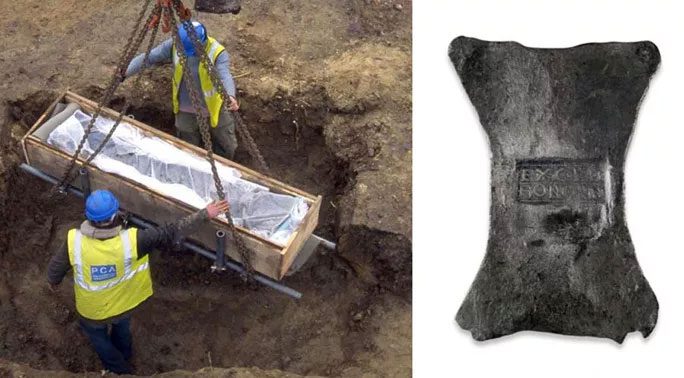Archaeologists in England have recently discovered a remarkable ancient architectural site, not only the luxurious tomb of a powerful noblewoman but also the largest illegal silver workshop from the Roman period in England.
According to Ancient Origins, the initial structure of the opulent ancient tomb was first uncovered in 2005 at Grange Farm in Gillingham, Kent. Archaeologists were examining the area before a housing project when they discovered two iron spearheads, leading to a significant excavation project that has continued since then.

Excavation work and one of the illegal silver bars found – (Photo: Newcastle University)
In addition to the tomb of a woman from a powerful Roman family in England, archaeologists have recovered a total of 453 Roman coins, 20,000 pottery fragments, and 8,000 animal bones, along with a treasure trove of other priceless artifacts.
The recent discovery includes 15 kg of secondary lead oxide, which can only arise from the process of silver extraction. This is evidence leading to an illegal silver workshop, hidden behind closed doors.
Dr. James Gerrad from Newcastle University stated that this illegal silver workshop may not have been used for minting counterfeit coins, but rather for crafting silver objects. The Romans regarded gold and silver as the “backbone” of the economy on the island, and the crafting of these precious metals was controlled by the empire. Therefore, the workshop hidden within a house is believed to be illegal.
The noblewoman was also discovered in previous excavations, resting in a lead coffin, with her remains well-preserved, indicating she was well-fed and in excellent health.
The dating of the ancient tomb cluster is from the 6th century AD. Archaeologists are currently continuing to investigate the mysterious silver workshop.





















































